Make a Choice, Part 2
Last week, I started talking about the second trial of the Great Designer Search 3, the multiple-choice test. Be sure to check out that article if you want to take the test for yourself.
There were so many questions, I only got through half of the answers. This week I give the other half.
39. Which category of player most dislikes high variance in gameplay, with "high variance" defined as larger swings in outcome possibilities for individual cards outside the player's control?
- Johnny/Jenny
- Timmy/Tammy
- Spike
- A new player
- A player who prefers multiplayer
Timmy and Tammy tend to enjoy high variance. Johnny and Jenny are accepting of it, as they often are trying to do offbeat things. New players like that they occasionally can win. And multiplayer play tends, by its nature, to allow more variance. Spike is the least happy with variance because they want their skill to be rewarded, and variance can lessen the rate at which that happens.
40. Which of the following cards is typically the strongest in Limited play?
Universal answers, especially relatively cheap ones, are very powerful in Limited, making Pacifism the strongest Limited card of the bunch.
41. Which of the following is not generally aimed at competitive Standard play?
- Card draw
- Counterspells
- Direct damage that can hit either creatures or players
- Mass creature kill
- One-shot mana acceleration
Time and again, we've been burned by "rituals," so much so that we avoid pushing them for Standard. The other four effects (card draw, counterspells, flexible direct damage, and mass creature kill) are effects we'll push for Standard, making E the correct answer.
42. Which of the following iconic white cards is most reasonable to reprint in a Standard-legal set?
We don't like mass land destruction in Standard, so not Armageddon. We've pushed back the power of our color hosers, so not Karma. Land Tax and Swords to Plowshares have both power level and color pie issues. That leaves Baneslayer Angel as the correct answer.
43. Which of the following iconic black cards is most reasonable to reprint in a Standard-legal set?
Demonic Consultation and Demonic Tutor are stronger tutors than we want in Standard. Infernal Darkness has cumulative upkeep, something we don't support in current sets, and it's overpowered for Standard (not to mention a super unfun card to play against). Sinkhole is way too strong for modern-day land destruction. That leaves Underworld Dreams as the correct answer.
44. The card Felidar Guardian was banned last year in Standard because of an unintended interaction with the planeswalker card Saheeli Rai. If this interaction were realized late in design, what would have been the best solution?
- Add "Felidar Guardian enters the battlefield tapped."
- Add one colorless mana to the cost of Felidar Guardian.
- Change Felidar Guardian's ability to return the permanent to the battlefield at the beginning of the next end step.
- Keep both cards as is, but add a flexible instant that can destroy either one of Felidar Guardian and Saheeli Rai.
- Change Saheeli Rai's mana cost to UUR so that she is harder to cast in a three-color deck.
The key to solving the problem is stopping the combo from going infinite. Answer C is the one that does this. It's true that D puts an answer in the environment, but that's not as efficient a solution as addressing the problem within the combo itself.
45. Assuming all of the following designs are costed at an appropriate power level and win rate in Standard, which would be the least fun to show up in competitive play?
- An artifact that causes each player to lose 2 life during their upkeep.
- An artifact that taps to add three mana to your mana pool.
- An enchantment that lets you name a card, then stops the named card from being cast.
- An enchantment that stops all creatures from attacking.
- A sorcery that destroys all nonland permanents.
The correct answer is D, as it shuts down a key element of gameplay (and the win condition for many decks) with a component that only two of the five colors can destroy once it's on the battlefield. The other cards on the list have more workarounds for the opponent once they've been played.
46. Which of the following designs would we be most likely to reprint in a Standard-legal set?
This question is asking if you understand the basic power level of each card as well as the impact it would have on Standard. It's also asking a little bit about color pie knowledge, as Dark Ritual and Swords to Plowshares aren't cards we would do in those colors today. Of the cards that remain, Llanowar Elves is the least problematic and the most likely to return.
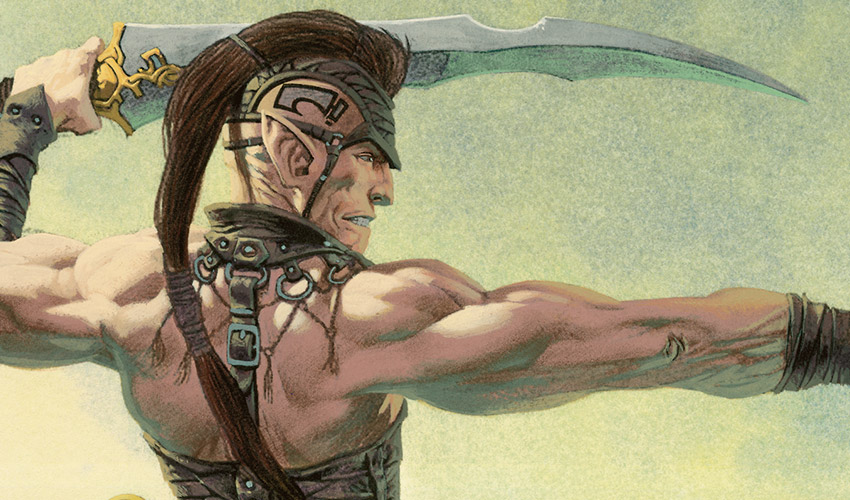
47. From a design standpoint, what is the biggest problem with the following card?
Mega Bolt
3R
Instant
CARDNAME deals 8 damage to target creature.
- 7 is a more aesthetic number than 8.
- It blurs the line between black and red.
- Players might find ways to redirect the damage to their opponents.
- A card dealing this much damage should be a sorcery.
- It's too much damage for four mana.
One of the things design spends a lot of time on is making sure that each color has its own distinct identity. One of the ways we do this is to make clear rules differentiating how colors accomplish the same thing. As such, we've been limiting how much damage red can do to creatures so that we don't make red spells that feel like black destruction spells. This makes B the correct answer. Answers A, D, and E aren't true. Answer C is something Play Design might come back to us with in a certain metagame, but isn't something we often care about.
48. Which of these text boxes would most likely be red-flagged as highly complex for a common creature?
- 2W: Target creature gets +1/+1 until end of turn.
- 1R: CARDNAME gets +2/+0 and gains first strike until end of turn.
- When CARDNAME enters the battlefield, target creature gets +2/+2 and gains trample until end of turn.
- Whenever CARDNAME attacks, creatures you control get +1/+1 until end of turn.
- Whenever another creature enters the battlefield under your control, CARDNAME gets +1/+1 until end of turn.
Cards that activate to repeatedly target other creatures, especially ones granting an ability, are red-flagged. Firebreathing isn't. Enters-the-battlefield effects that do simple effects like Giant Growth aren't. Attack triggers that have global effects aren't. And cards that boost themselves based on a trigger condition aren't. That makes A the correct answer.
49. You're playing a multiplayer game. Which pair of mechanics would cause the most confusion if they frequently appeared together in a play environment?
- Devour and exploit
- Fabricate and formidable
- Miracle and cycling
- Modular and scavenge
- Myriad and battalion
Let me start by listing what these mechanics do:
- Devour N (As this object enters the battlefield, you may sacrifice any number of creatures. This permanent enters the battlefield with N +1/+1 counters on it for each creature sacrificed this way.)
- Exploit (When this creature enters the battlefield, you may sacrifice a creature.)
- Fabricate N (When this permanent enters the battlefield, you may put N +1/+1 counters on it. If you don't, create N 1/1 colorless Servo artifact creature tokens.)
- Formidable (. . . if creatures you control have total power 8 or greater . . .)
- Miracle [Cost] (You may cast this card for its miracle cost when you draw it if it's the first card you drew this turn.)
- Cycling [Cost] ([Cost], Discard this card: Draw a card.)
- Modular N (This comes into play with N +1/+1 counters on it. When it's put into a graveyard, you may put its +1/+1 counters on target artifact creature.)
- Scavenge [Cost] ([Cost], Exile this card from your graveyard: Put a number of +1/+1 counters equal to this card's power on target creature. Scavenge only as a sorcery.)
- Myriad (Whenever this creature attacks, for each opponent other than defending player, you may create a token that's a copy of this creature that's tapped and attacking that player or a planeswalker he or she controls. If one or more tokens are created this way, exile the tokens at end of combat.)
- Battalion (Whenever this card and at least two other creatures attack . . .)
Devour plus exploit – The rules trickiness here is that you can't sacrifice the same creature to both abilities. That's a general Magic rule, though, so not that tricky.
Fabricate plus formidable – Fabricate creates the same amount of power despite the choice, so there's not too much confusion here.
Miracle and cycling – Miracle triggers when you draw it. Cycling is usable in your hand. If a card had both, you couldn't both cast it for its miracle cost and use cycling, but that's true of any spell once you cast it, so not too tricky.
Modular plus scavenge – Modular works when the creature dies and scavenge works when the card is in your graveyard, so not too tricky.
Myriad plus battalion – Battalion doesn't count the token creatures because they never attacked—they were created already attacking. This not at all intuitive, and would most likely lead to a lot of confusion. Thus, E is the correct answer.
50. If we printed an enchantment with the same text as Stabilizer ("Players can't cycle cards."), which color should it be?
- White
- Blue
- Black
- Red
- Green
The color that does proactive answers, especially on enchantments, is white.
Junkpile Engineer
--- [CMC: 3]
Creature — Human Artificer
3/2
2, Sacrifice an artifact: Look at the top X cards of your library, where X is the converted mana cost of the sacrificed artifact. Put one of them into your hand and the rest on the bottom of your library in a random order.
51. What are the most appropriate colors for this card?
- White-black
- Blue-red
- Black-red
- Red-white
- Green-blue
The card sacrifices artifacts as a cost. The two colors most likely to do that are black and red, with red being the most likely. Next, the card does an Impulse effect (looking at the top X cards of the library and drawing one, putting the rest on the bottom of the library). Impulsing is blue. Then add in the flavor, which has an Izzet feel, and you get to the correct answer: blue-red.
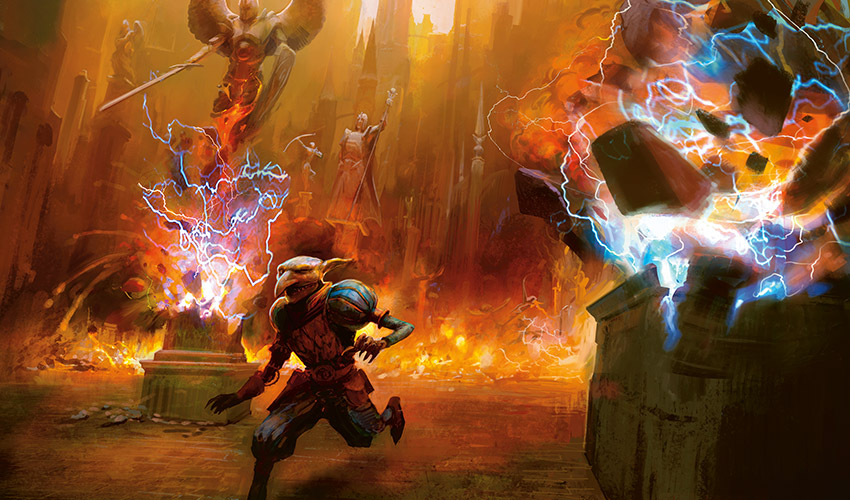
52. What is the most appropriate rarity for this card?
- Common
- Uncommon
- Rare
- Mythic rare
The card is way too complex for common. It has repeatable card drawing (and extra-efficient card drawing at that) on a creature, making it less likely we'd do it at uncommon. It's not splashy enough to be a mythic rare, though, which means rare is the correct choice.
53. Which of the following changes is Set Design most likely to make?
- Change the number of cards looked at to a locked number rather than caring about converted mana cost.
- Give the creature haste.
- Make the power and toughness the same.
- Add the ability "2, T: Put an artifact card from your hand onto the battlefield."
- Put the cards revealed into the graveyard.
The creature might get haste if Play Design feels a need to up its power level, but there's no inherent reason for Set Design to do that. There's also no need to square its stats as there's nothing about the card that requires you to track stats changing. Letting you put the artifact directly into play circumvents the mana cost and would most likely causes problems. It's highly doubtful you'd put the cards in the graveyard as that would make it more of a library resource card (each activation uses up a chunk of your library), which isn't the point of the design. Changing the number to a locked number would eliminate a bunch of rules text and make the card easier to process, making A the correct answer.
Dead Man Walking
--- [CMC: 7]
Creature — Shapeshifter Wizard
1/1
When CARDNAME enters the battlefield, return target creature card from any graveyard to the battlefield under your control. All your creatures then become copies of that creature.
54. What are the most appropriate colors for this card?
- Blue-black
- Blue-red
- Black-green
- Red-green
- Green-blue
The card reanimates a creature. That ability is primary in black and secondary in white (although usually on smaller creatures). The copy effect is primarily blue but done on rare occasion in white. That makes blue-black the correct answer.
55. What is the most appropriate rarity for this card?
- Common
- Uncommon
- Rare
- Mythic rare
We don't do reanimation at common. We do it at uncommon, but we wouldn't tie it to such a strong effect. The deciding factor between rare and mythic rare is how splashy the effect is, and this one is pretty splashy and has a huge game impact, so mythic rare is the correct answer.
56. What change wouldn't design make?
- Give the creature flash.
- Have it only get creatures out of your graveyard.
- Have it only get creatures out of the opponent's graveyard.
- Have the returned creature be sacrificed at end of turn.
- Make it a 0/0 creature.
Blue is primary for flash, so answer A could be done. Limiting which graveyard you get the creature out of could be a dial for Set Design or Play Design to tune, so B and C could be done. Black on rare occasion will sacrifice creatures it reanimates, so D is still possible, although less likely. If you made the creature a 0/0 creature, it would immediately die from state-based actions after it enters the battlefield, as it would have 0 toughness. The enters-the-battlefield effect would still happen, but you're essentially making a confusing card that just wants to be a sorcery. As a general rule of thumb, we avoid creating cards in a form that would cause unnecessary confusion, making E the correct answer.
57. You're designing a set that returns to a plane we've been to before and plan to have Humans, Wolves, and Spirits. Which world would be most appropriate?
- Amonkhet
- Innistrad
- Ixalan
- Kaladesh
- Zendikar
Innistrad was a set with a tribal theme that had Humans, Spirits, and Wolves/Werewolves as three of its five tribes. This makes B, returning to Innistrad, the correct answer.
58. Which of the following attributes can a card in a Standard-legal set not mechanically care about?
- Card subtypes
- Card supertypes
- Expansion symbol
- Mana cost
- Power/toughness
We do tribal effects, so cards can care about subtypes. We make cards that care about being basic or legendary, so cards can care about supertypes. We have cards that specifically call out the converted mana costs of cards, so that's doable. We make mechanics like ferocious and formidable, so the game can care about power and toughness. Because of our rule that all cards with the same English name are treated identically and we reprint cards, meaning the same cards exist with various expansion symbols, black-border Magic can no longer mechanically care about expansion symbols. (It did in some of Magic's early sets.) Silver-border sets, though, can care about expansion symbols, and we have made silver-bordered cards that do.
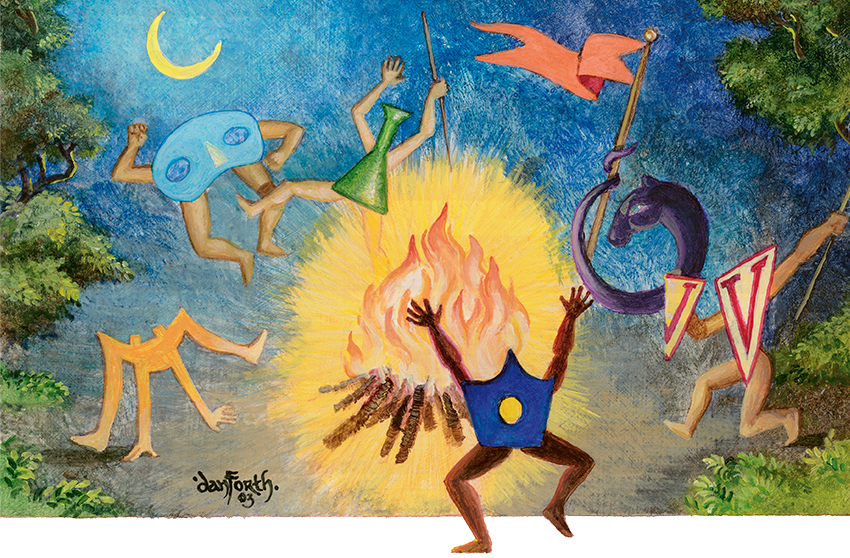
59. Which of the following abilities is R&D least likely to put on a mono-red creature in an upcoming set?
- [MANA]: CARDNAME gets +1/+0 until end of turn.
- CARDNAME must attack if able.
- When CARDNAME enters the battlefield, you may return target sorcery card from your graveyard to your hand.
- T: Draw a card, then discard a card.
- Creatures you control have haste.
Red gets firebreathing effects, red has cards that must attack, red has cards that "regrow" a sorcery, and red has cards that grant other creatures haste. The correct answer is D because in red when we "loot," we do what we call rummaging, where red discards a card before it draws a card. "Draw a card, then discard a card" is the blue version.
60. According to current design standards, which of the following "enters-the-battlefield" effects is least likely to be on a common creature?
- "Destroy target enchantment an opponent controls."
- "Return target creature card from your graveyard to your hand."
- "Target creature can't block this turn."
- "Target creature gets +2/+2 until end of turn."
- "You may return target creature to its owner's hand."
The correct answer is B because we've moved the Gravedigger effect to uncommon to lessen the creation of loops. The other four effects we're willing to do at common.
61. Which of the following sets isn't designed around factions?
- Amonkhet
- Ixalan
- Khans of Tarkir
- Ravnica
- Shards of Alara
Ixalan was built around four tribal factions. Khans of Tarkir was built around five three-color wedge factions. Ravnica block was built around ten two-color factions (with the Ravnica set built around four of the ten). Shards of Alara was built around five three-color arc factions. Amonkhet, in contrast, was not built around factions.
62. Which of the following mechanics would be the best fit for the Simic guild from Ravnica?
- Dash
- Entwine
- Proliferate
- Rebound
- Undying
The Simic guild focuses on upgrading creatures, often using +1/+1 counters. Of these five choices, proliferate has the best synergy with this style of gameplay. Entwine and rebound are too spell focused. Dash is too much about attacking, and undying is much more Golgari than Simic.
Secondary—This is the color (or colors) that an ability shows up in on a somewhat regular basis, but not as often as the primary and not always in as low of rarity as the primary. If the effect is something we do a lot of, the secondary color will usually get the ability in most sets.
63. Which color is secondary at trample?
- White
- Blue
- Black
- Red
- Green
Green is primary at trample. White, blue, and black are tertiary at trample. Red is secondary at trample.
64. Which color is secondary at haste?
- White
- Blue
- Black
- Red
- Green
Red is primary at haste. Green is tertiary at haste. Black is secondary.
65. Which color is secondary at vigilance?
- White
- Blue
- Black
- Red
- Green
White is primary at vigilance. Green is secondary.
66. What kinds of creatures can green destroy?
- artifact creatures and flying creatures
- Attacking creatures and blocking creatures
- Blue creatures and black creatures
- Tapped creatures and enchanted creatures
- White creatures and red creatures
Green is allowed to destroy any kind of artifact, including artifact creatures. Green is allowed to destroy flying creatures. This makes A the correct answer.
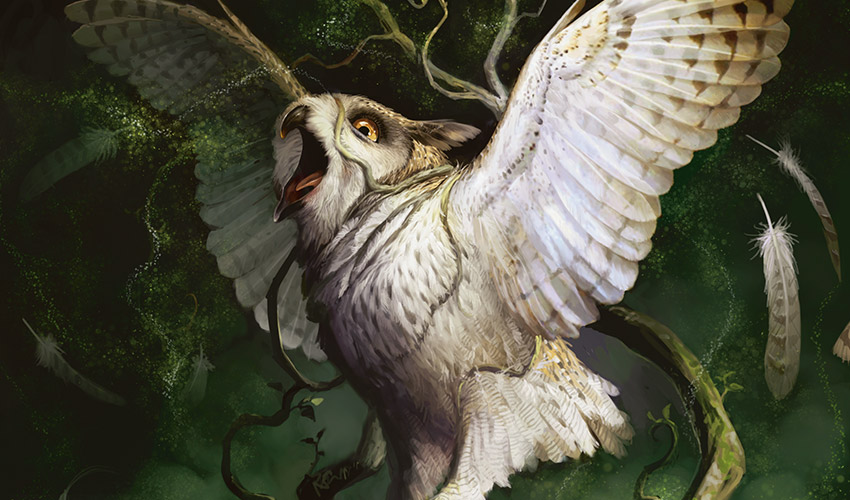
67. Which of the following mechanics is not an ability word?
- Awaken
- Delirium
- Hellbent
- Landfall
- Morbid
An ability word is a word that thematically groups cards with a common functionality, but doesn't have any rules meaning. It can usually be identified as an italicized word that begins with an em dash before the rules text. Delirium, hellbent, landfall, and morbid are all ability words. Awaken is the only keyword mechanic listed, and thus is the correct answer.
68. Why doesn't common often have seven-mana instants and sorceries?
- It makes the math too hard.
- They are hard to design.
- It's too complex for beginners.
- It's too impactful for common.
- Common creatures need to be more expensive than the instants and sorceries.
The math isn't necessarily hard, they aren't hard to design, they aren't necessarily too complex for beginners, and instants and sorceries can be more expensive than creatures. The problem is that it's almost impossible to make effects that cost that much that aren't too impactful for common.
69. Which world has had the most expansions set on it?
- Dominaria
- Innistrad
- Mirrodin
- Ravnica
- Zendikar
Innistrad had five expansions set on it. Mirrodin had six. Ravnica had six. Zendikar had five. Dominaria, at 40, has more sets than the others combined. A is the correct answer.
70. A linear mechanic is one that encourages players to build around a specific aspect. Which of the following mechanics is the least linear?
- Delirium
- Energy
- Morph
- Rally
- Transform
One of the easiest ways to think about this is which mechanics make you want to play more of the same mechanic. Once you've set up your deck to make delirium work, for instance, you're encouraged to play more delirium cards. The same holds true for energy, morph, and rally. That is only true for transform, though, if you play one of a handful of cards that rewards you for playing transform cards. The mechanic itself doesn't tend to push you to play more transform cards. The Werewolf cards do, but that's more of a function of the Werewolf tribal mechanic than it is of transform.
71. Which of the following formats can't the card Power Conduit from Mirrodin be played in?
- Commander
- Legacy
- Modern
- Pauper
- Vintage
Power Conduit is an uncommon card, and thus not playable in Pauper—a format that uses only common cards. It is playable in the four other named formats.
72. Which of the following is the most important reason that some cards' mana costs are higher than others?
- Higher mana costs are a hint to new players that the cards are more powerful
- So that people will play them later in the game
- To encourage players to put more lands in their decks
- To encourage player's to "splash" an additional color in their decks
- To make the cards different
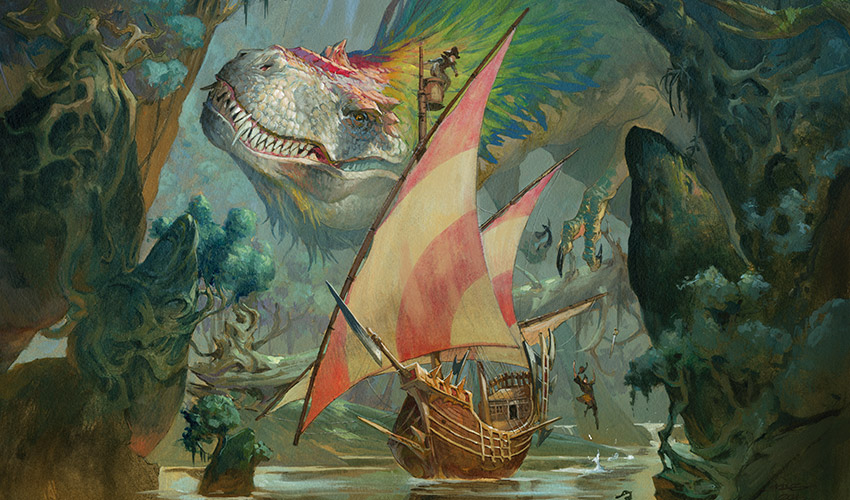
The major reason for the mana system is to spread out when cards can be played, allowing effects to ramp up in power as the game progresses. This makes B the correct answer.
73. Which of the following is the most important reason for the color pie to exist?
- It adds more symbols to the game.
- It allows a wider variety of costs.
- It encourages deck and gameplay diversity.
- It expands the color palette usable in the art.
- It increases the number of distinct cards that can be designed.
The color pie's most important function is to ensure players must make choices about which cards to include. This leads to both deck and gameplay diversity. It does also allow more distinct cards to be designed, but that's not as important to the overall game as the play diversity.
74. Which of the following effects is design allowed to use on a Standard-legal black-bordered card?
- Affecting a future game with the same opponent
- Having a card coexist in more than one zone
- Making a choice secret from the other player(s)
- Putting a card in your hand you do not own
- Rolling a six-sided die
You can't affect a future game, have a card coexist in two zones, put a card you don't own into your hand, or roll a six-sided die, but you can make a secret choice (such as on the card Goblin Game) in black-border Magic. The rest can all be done, and have been done, on silver-bordered cards.
75. You're designing a card with a converted mana cost of 10. Which of these card types is it least likely to be?
- Artifact
- Creature
- Enchantment
- Instant
- Sorcery
The difference between an instant and a sorcery is whether or not you want the spell to be able to react to other things. Once you get to ten mana, the size of the effect you have access to means it's not going to need to be reactive. Thus, D is the correct answer.
Pencils Down
Whew! And that wraps up the multiple-choice trial for the Great Designer Search 3. I'm eager to hear what you think about all the answers as well as the questions and the GDS3 itself. You can email me or talk to me through any of my social media accounts (Twitter, Tumblr, Google+, and Instagram).
If the Great Designer Search 3 has caught your interest, please make sure to check in on Friday, March 9, when the "show" officially begins.
Join me next week when Masters 25 preview week begins. I'll be going over the third GDS3 trial, the design test, in two weeks.
Until then, may you have all the answers—or at least enough to advance to the next stage.
#511: 20 Lessons: Less Is More
#511: 20 Lessons: Less Is More
46:40
This is part seventeen in my 20-part series "20 Lessons, 20 Podcasts" based on my 2016 Game Developers Conference speech. In this podcast, I talk about the lesson "You don't have to change much to change everything."
#512: Playtest Cards
#512: Playtest Cards
37:34
In this podcast, I talk all about the history of playtest cards in R&D, including a discussion on the latest technology.
- Episode 510 Great Designer Search 3 (40.0 MB)
- Episode 509 Magic Evolution, Part 2 (40.6 MB)
- Episode 508 Unstable Talk, Part 2 (16.4 MB)

